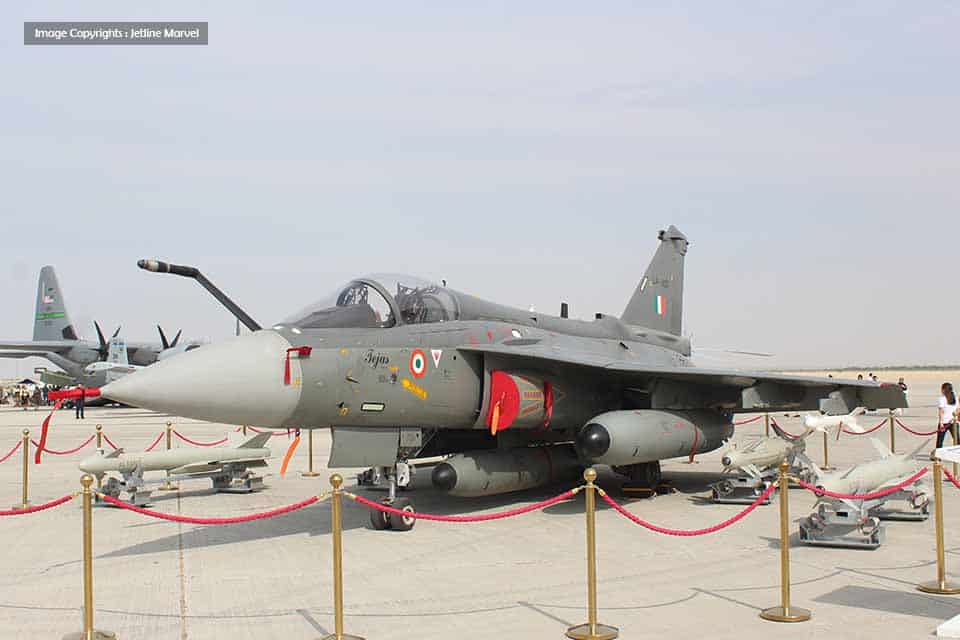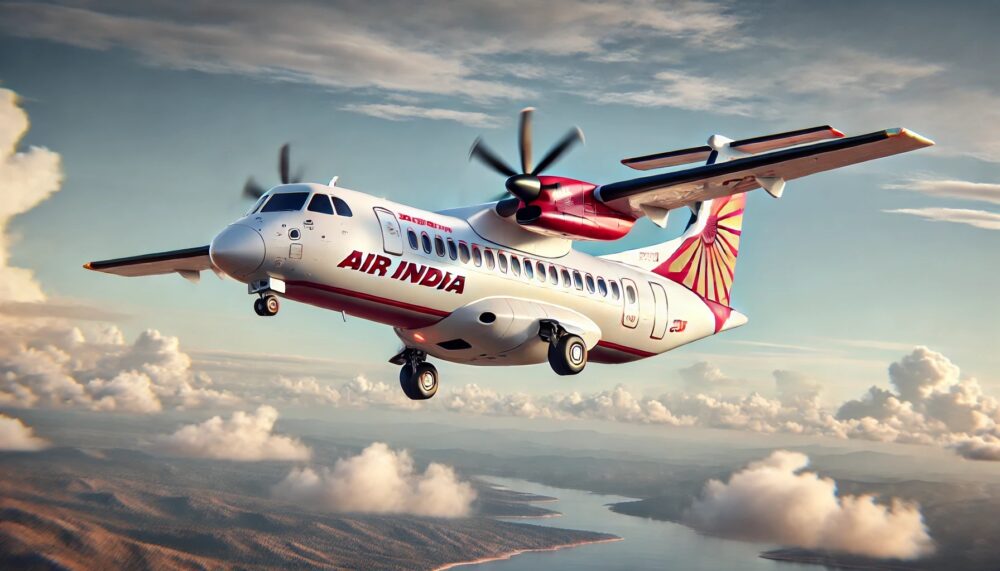Aviation
Tejas and C-390 Millennium: India and Brazil’s Defense Trade Vision

India and Brazil are exploring a mutually beneficial deal to enhance their defense product exports. There are indications that this potential agreement could include the exchange of fighter jets, essentially functioning as a barter system. For example, India has a long-standing offset policy requiring foreign defense companies to reinvest a portion of their contract value back into India through technology transfer or other reciprocal benefits.
Many countries engage in such exchanges to support each other’s defense industries, thereby strengthening national policies and economies. A notable example is the barter deal between South Korea and Indonesia, where South Korea sold its T-50 jets to Indonesia in return for defense-related goods and trade advantages.
India-Brazil defence mutual benefits
If the India-Brazil deal comes to fruition, it could provide mutual benefits, as both nations are in need of advanced platforms. Brazil is well-known for its Embraer aircraft, which ranks as one of the top three manufacturers of private and commercial jets. However, Brazil lacks expertise in fighter jet production, and this deal could provide the exposure needed to enter the fighter jet market.
In 2014, Brazil made a significant purchase of 36 Gripen fighters, with deliveries expected by 2027. Brazil is also producing Gripen fighter jets at its Embraer plant, with SAAB and Embraer collaborating to enhance the performance of the Gripen aircraft further.
India Faces Shortage of Military Aircraft Materials
Currently, India faces a shortage of medium military transport aircraft and is seeking to acquire more. The C-130J and C-17 Globemaster, along with the Russian IL-76, are currently in service. However, the production of the C-17 has been halted, making it unavailable in the market, while the IL-76 is experiencing maintenance challenges due to a shortage of spare parts.
Air India Might Operate Tata-Made New Airbus C295 Aircraft
India is currently seeking a reliable partner for military transport aircraft, and the Embraer C-390 Millennium stands out as an ideal fit. If a deal between Brazil and India materializes, it could yield significant benefits for both nations.
Embraer C390 payload capacity
The Brazilian Air Force is the largest in the Southern Hemisphere and the second largest in the Americas. Embraer proudly presents the C-390 Millennium as the future of military transport aircraft, featuring a payload capacity of 26,000 kg. This makes it a compelling choice, especially since it outperforms the C-130J Super Hercules, which has a payload capacity of 19,000 kg. Given India’s interest in enhancing its military capabilities, it’s clear why experts believe that discussions around this aircraft could lead to a significant agreement.
This international airline is offering free flight tickets to Indian travelers
Brazil operates the Gripen E fighter jet, which is expected to expand its fleet in the near future. However, the Tejas fighter jet has certain advantages over the Gripen. For instance, the Tejas features a quadruple digital fly-by-wire system that offers greater redundancy and safety compared to the single FBW system in the Gripen. Additionally, its use of composite materials reduces its radar cross-section, and its wide duct air intake enhances performance. Notably, the Tejas can take off in as little as 460 meters, significantly shorter than the Gripen’s 800-meter requirement.
Tejas and Gripen E Engine
Both jets are equipped with advanced avionics and electronic warfare systems, but the Gripen does hold some advantages with its more powerful GE F414 engine. The Gripen has a better payload capacity and maximum takeoff weight, and the optimized F414 engine provides superior thrust, enhancing agility and aerial engagement capabilities. However, the F404 engine of the Tejas is cheaper to maintain and operate compared to the F414.
With a maximum capacity of 26 tonnes, the C-390 surpasses the C-130’s 19-tonne capacity. Additionally, the C-390 is equipped with both probe and drogue systems, allowing it to refuel fighter jets and even serve as a tanker—capabilities that the C-130J does not offer. If India and Brazil decide to collaborate on the C-390’s production, it could be a game-changer for both nations.
India could potentially modify the C-390 aircraft for combat roles, such as launching long-range subsonic cruise missiles. This adaptation is feasible, as evidenced by the U.S. using its MC-130 to launch AGM-158 missiles.
India’s collbration with TATA & Airbus C295
Currently, India, in collaboration with Airbus, is producing around 56 aircraft for defense purposes. This milestone strengthens India’s defense capabilities, as spare parts will be more accessible due to local production and support. The C295 aircraft plays a crucial role in boosting regional connectivity and transporting troops and essential military supplies.
Furthermore, the C-390 could function as a drone mothership for deploying India’s swift and stealthy drones, providing a cost-effective solution that maximizes operational capabilities. However, challenges related to self-survivability, precision strikes, and operations in contested environments need to be addressed. If these challenges can be resolved, this concept could significantly enhance India’s long-range strike capabilities.
Similarly, manufacturing the Tejas MK1 in collaboration with Brazil would bring substantial benefits, especially for Brazil. Their mutual membership in BRICS could foster deep cooperation, defense technology sharing, and industrial development. By partnering on the Tejas program, Brazil’s aerospace industry could enter the fighter aircraft segment, leading to advancements in knowledge transfer and the establishment of local supply chains.
Reducing reliance on India for fighter maintenance and support, the C-390 Millennium would significantly enhance India’s logistical and operational capacity. Meanwhile, the Tejas MK1A offers Brazil an affordable yet effective solution to bolster its air combat capabilities, further deepening the strategic ties between the two nations.

Aviation
Air India Might Operate Tata-Made New Airbus C295 Aircraft

Tata Group’s expansion into the aviation sector continues to gain momentum, with Tata Advanced Systems Limited (TIAL) recently inaugurating the final assembly line (FAL) facility for the Airbus C295 transport aircraft.
Currently, Indian airlines are purchasing aircraft from ATR and De Havilland, focusing on shorter regional routes. These are propeller-based aircraft, similar to the C295. If Airbus and TATA go forward with this plan, it could be a major breakthrough for their business collaboration.
This international airline is offering free flight tickets to Indian travelers
If Air India shows interest in operating the C295, it would offer significant advantages. Since its parent group is involved in the aircraft’s production, Air India could benefit from streamlined access to parts and maintenance, leading to cost savings and operational efficiency.
This marks an exciting new chapter, as TIAL is also planning to develop a civilian variant of the C-295, which could potentially be operated by its own airline, Air India. If this vision comes to fruition, Air India might become the first carrier to operate the civilian C-295, marking a significant milestone for both the airline and the country’s aviation landscape.
The C295 can accommodate up to 71 passengers, close to the ATR 72’s capacity of around 78. This aircraft would be especially reliable for airlines, as parts would be readily available due to the assembly plant in India. While the C295 is primarily used for military operations, a commercial version would be a game-changer for the airline industry, providing a win-win situation for both Airbus and TATA. This could also lead to more competitive pricing.
Airbus Final Assembly Line Adapts for A350 Freighter Production
This move is aligned with the growing demand for regional connectivity in India, where smaller, regional airports require more versatile aircraft to meet travel needs. The C-295’s short take-off and landing (STOL) capabilities make it an ideal choice for connecting these regional airports, many of which have shorter runways that are not suited to larger commercial jets.
By introducing turboprop aircraft into its fleet, Air India could fill an important gap in the market, providing crucial connectivity to underserved destinations.
The potential introduction of a civilian version of the C-295 offers several benefits. First, it could significantly reduce operating costs for Air India, especially with domestic production. Having an aircraft manufactured within the country would allow for more affordable maintenance, support, and easier fleet expansion.
Three Major UK Airports Up for Multi-Billion Pound Sale
Furthermore, this move would complement the Make in India initiative, reinforcing the government’s vision to boost the country’s domestic manufacturing sector, particularly in the aerospace industry.
Additionally, the C-295’s versatility in both passenger and cargo configurations would make it an attractive choice for mixed-traffic regional routes. The fuel efficiency of turboprop aircraft over shorter distances also aligns with the need for cost-effective operations on regional routes, where airlines face increasing competition.
If Tata’s ambitious plans for a civilian C-295 materialize, it would not only strengthen the Tata Group’s position as a key player in both the military and civilian aviation sectors but also contribute to India’s rise as a competitive force in the global aerospace market.
For Air India, this shift towards operating a domestically manufactured aircraft would further underline its commitment to the country’s aviation future.
-

 Aviation2 months ago
Aviation2 months agoMicrosoft Flight Simulator Raises $3 Million to Bring Back the An-225 Mriya
-

 Airlines2 months ago
Airlines2 months agoQatar Citizens Can Travel to the United States Without a Visa
-

 Aviation2 months ago
Aviation2 months agoQatar Airways bans these new Electronic Devices on plane
-

 Defence2 months ago
Defence2 months agoWhich Country Has the Largest Fleet of Fighter Aircraft?
-

 Airlines5 days ago
Airlines5 days agoDAMAC Air: Dubai’s New Luxury Airline Offers Free Flights for Registration
-

 Airport2 months ago
Airport2 months agoWestern Sydney Airport Welcomes Its First Plane After 6 Years of construction
-

 Airlines4 days ago
Airlines4 days agoAir India to Launch aircraft maintenance training institute in Bengaluru
-

 Aviation2 months ago
Aviation2 months agoDid you know ? Once Boeing 747 carried 1088 passenger in 1991









You must be logged in to post a comment Login